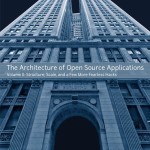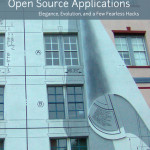Oh. My. God! I’ve been using git for years now and I only learned this today – git branch names support forward slashes! How awesome is that?! You can do things like this:
$ git checkout -b feature/foobar
Grouping branches like this is much easier indeed!
I came across this while reading CakeDC’s CakePHP Plugin Standard. Searching around to find more details, I see that there are a few potential issues with this naming convention, as tools occasionally break (composer, IDEs, etc). However, these problems are fixed by tool vendors. Looking into it even further, I found the following description in the book “Version Control with Git: Powerful tools and techniques for collaborative software development” (Google Books preview):
Dos and Don’ts in Branch Names
Branch names must conform to a few simple rules.
- You can use the forward slash (/) to create a hierarchical name scheme. However, the name cannot end with a slash.
- The name cannot start with a minus sign (-).
- No slash-separated component can begin with a dot (.). A branch name such as feature/.new is invalid.
- The name cannot contain two consecutive dots (..) anywhere.
- Further, the name cannot contain:
- Any space or other whitespace character
- A character that has special meaning to Git, including the tilde (~), caret (^), colon (:), question mark (?), asterisk (*), and open bracket ([).
- An ASCII control character, which is any byte with a value lower than \040 octal, or the DEL character (\177 octal)
These branch name rules are enforced by the git check-ref-format plumbing command, and they are designed to ensure that each branch name is both easily typed and usable as a filename within the .git directory and scripts.
So, as you can see, you aren’t even limited to the single forward slash. Even things like this work just fine:
$ git checkout -b Leonid/ideas/feature/foobar
But remember, just because you CAN do something, doesn’t necessarily mean you SHOULD. Have a look at this StackOverflow discussion about git branch naming best practices for more understanding on what you should and shouldn’t do.


